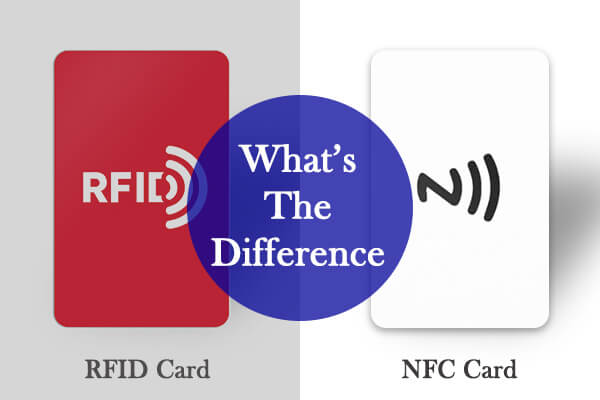Over the last couple of years, there has been an increase in contactless payments via mobile wallets because of NFC technology. This technology allows enabled devices that are near each other to wirelessly share data. NFC technology is more fine-tuned than RFID technology though it evolved from RFID. NFC cards provide a quick and simple way for consumers to pay, saving them time at checkout hence their increase in popularity. RFID technology, on the other hand, uses radio waves to relay identifying information from an electronic tag placed on an object to an electronic reader. How do these cards differ?
1. Volume of data read at one time
Only a single NFC card can be scanned at one time, therefore, the card is a good fit for contactless payment transactions. In contrast, RFID cards can be read quickly in batches making the technology a good fit for inventory management.
2. Distance
RFID cards can be used over long distances and they don’t require a direct line of sight to the reader. However, NFC cards are limited to short distances as they require the communicating devices to be within a few centimeters of each other because they require a direct line of sight to the reader.
3. During payments
With NFC cards, a terminal reads the chip then transmits data to a card processor. If no fraud is detected, confirmation is sent to the card issuer and if funds are sufficient, the payment is approved.
RFID cards communicate between a transmitter and a receiver. The cards work fully automatically by either waving or tapping without entering a PIN or waiting for the chip reader, as they transmit payment details through radio frequency.
4. Frequency
NFC cards operate within the high frequency (HF) range of the RFID frequency spectrum. On the other hand, RFID cards can operate at 3 different frequency ranges, allowing the technology to be tailored for different uses. These include; ultra-high frequency (UHF) 856 MHz to 960 MHz, high frequency (HF) 13.56 MHz, and low frequency (LF) 125 kHz to 134 kHz.
5. Two-way vs One-way
NFC cards can act as both a reader and a tag, therefore, it is capable of both one-way and two-way communication. This allows NFC to be used for more complex interactions such as card emulation. NFC cards are designed to be a secure form of data exchange.
RFID cards enable one-way wireless communication, that is, an RFID card sending data to an RFID reader. RFID devices can be active or passive meaning an active RFID device has its own power source, whereas passive ones are powered by a reader and don’t have their power source. An RFID smart card is an example of a passive device.
6. Usage
NFC cards are generally used for communication. They are used in data sharing, contactless payment, and in-store check-ins.
RFID cards are used for identification. The cards are used in inventory control, asset, and attendee tracking.
Conclusion
Both NFC and RFID technology is continuing to expand to allow contactless cards. To stay competitive in the ever-evolving payments landscape, NFC card technology is continuing to expand and contactless mobile payments are growing as a preferred payment method.
Click here to learn more about the latest eco-friendly material that we developed for making RFID cards and NFC cards.
You can also click here to learn more about the products that you can use in your project. If you are not sure, welcome to contact our sales experts any time.
.png)
